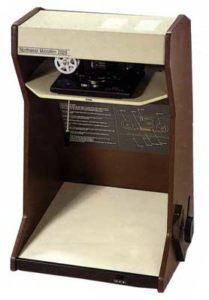I count myself blessed in many ways for having gotten into genealogy at such an early age. One thing I consider a blessing that others might not expect is my exposure to research methods now less common in this age of online records: the thrill of road trips to investigate cemeteries, not knowing what I would find; days spent in dusty courthouse vaults hunting records; and perhaps the most nostalgic and most antiquated, hours spent hand-cranking microfilm readers in libraries to experience the census. In this day and age, every name in the census is indexed online, and a genealogist can go straight “to” the person they’re looking for — though many names are misread or mistranscribed, leading to people who are “lost” in the census. (I am pleased to see Ancestry.com and other services re-create the “filmstrip” to nearly approximate this experience.) In those early days, especially for later censuses like 1900, I had no access to an index, and instead started at the beginning of a county and scrolled through every page reading the names until I found someone of interest — often not even knowing who I was looking for, but in the case of the Duttons, seeing who I might find. It gave the experience of walking down roads and through neighborhoods, “meeting” these people and their communities as I went.
That was my experience the day at the Decatur library I investigated the 1900 census of neighboring Lawrence County, Alabama. By that time I’d been researching the Dutton family for probably a year or more. I felt, with a little pride, that I “knew” the Duttons and could identify families as I found them. I remember well the confusion I felt, and the intrigue, when I encountered Callis Dutton. I think I had first seen his name in a printed listing of Moulton City Cemetery, and didn’t readily know who he was or who he connected to. That day in June 1900, I met him as a child, and met his mother.
Continue reading “A Lost Son Comes Home: Callis Dutton”
